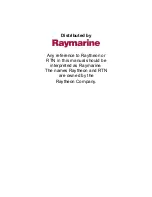
Glossary A-1
A
Glossary
This chapter describes and defines new terminologies used in this user’s guide.
DAB
D
igital
A
udio
B
roadcasting is a new method for the digital transmission of radio signals using a network
of terrestrial transmitters, which provides listeners with better sound quality, more choice and information.
This method was developed in Europe within the framework of EUREKA Project 147. DAB uses the
MPEG Audio Layer II system and the Coded Orthogonal Frequency Division Multiplex (COFDM)
technologies, which convert music or speech from analog signal into digital code. Through DAB, it is
possible to broadcast a group of stations on the same frequency, also known as ensemble. The number of
ensembles you can receive depends on your location and region. There are 41 frequencies on BAND III,
identified from 5A to 13F (see “Band III Frequencies” on page A-2, Table 1). Each of them is identified
by a label or name. DAB heightens your listening pleasure with near crystal-clear CD quality sound
without any annoying interference or signal distortion. DAB also transmits text on your radio’s LCD
screen, allowing broadcasters to send programme-associated data such as album title and song lyrics as
well as provide additional services, such as traffic information, sports, weather or stock market updates!
Ensemble
A group of stations broadcasted on a single frequency or channel. Also known as multiplex.
Nemo UG.book Page 1 Monday, April 25, 2005 10:05 AM






































